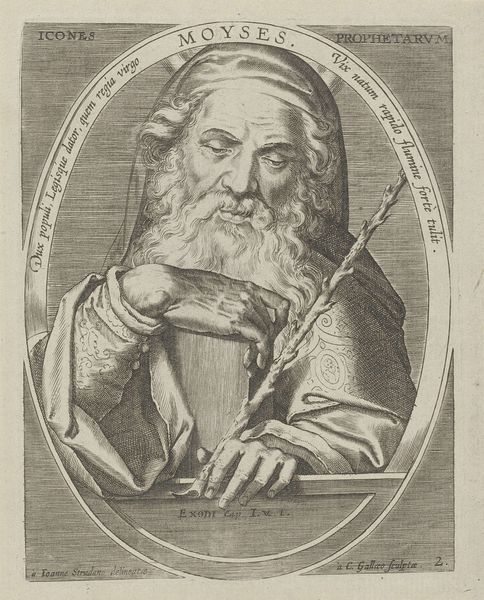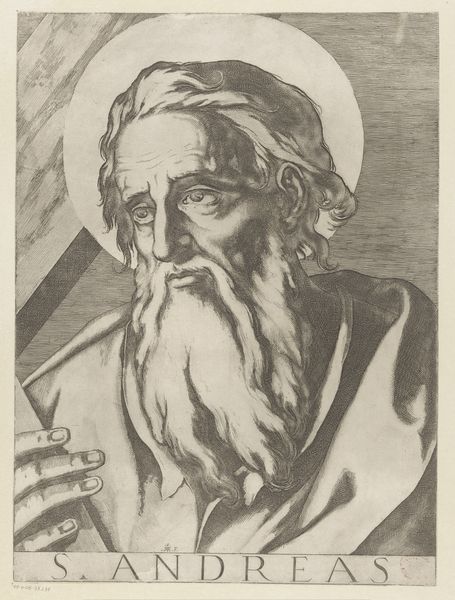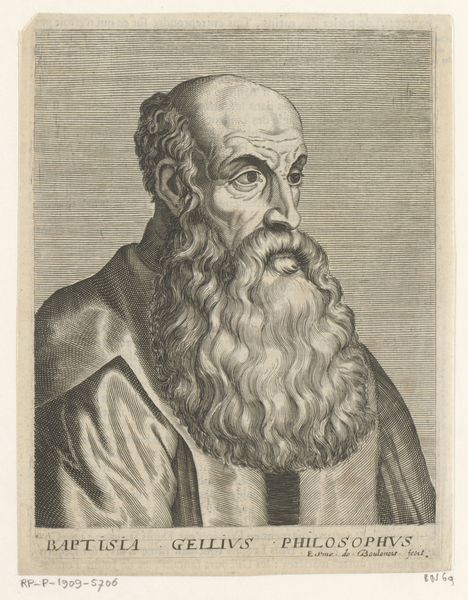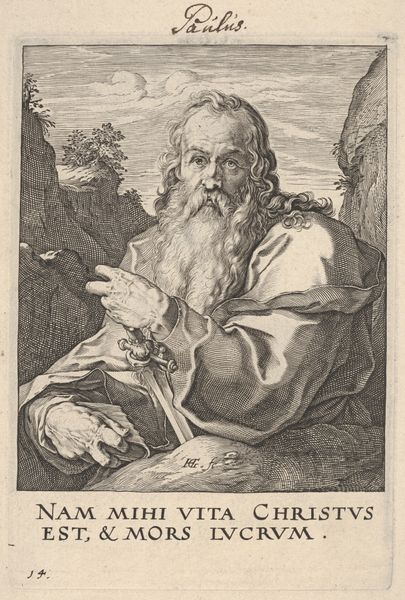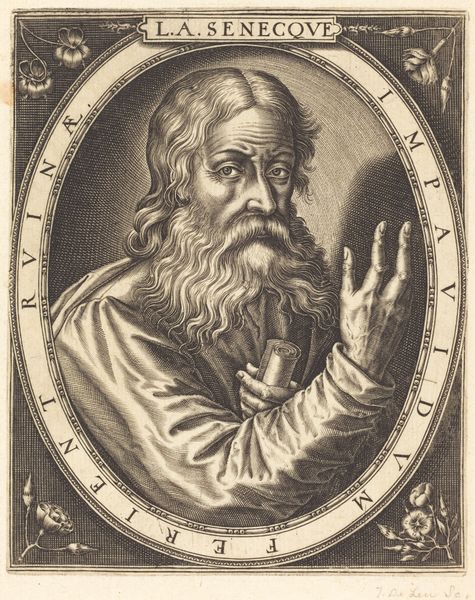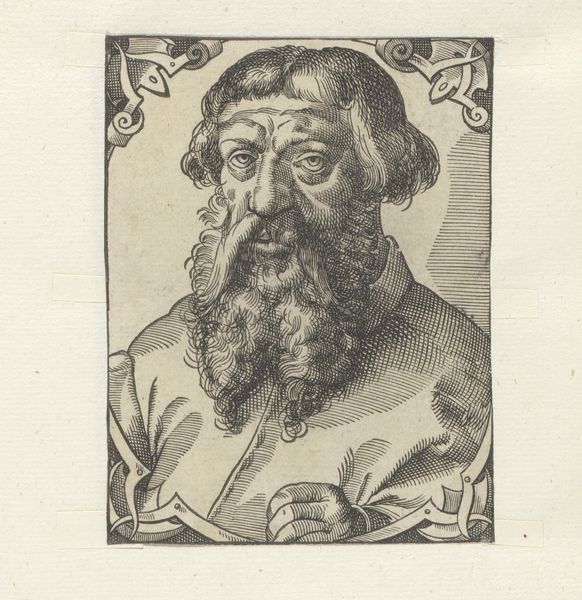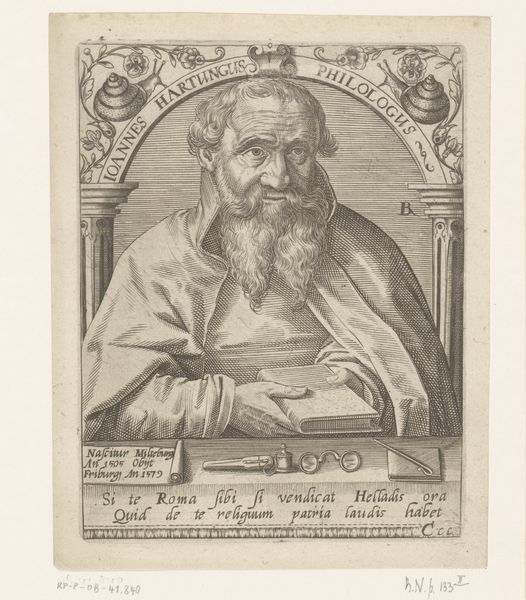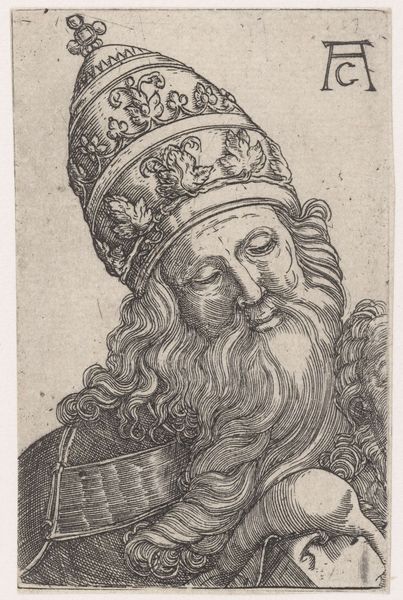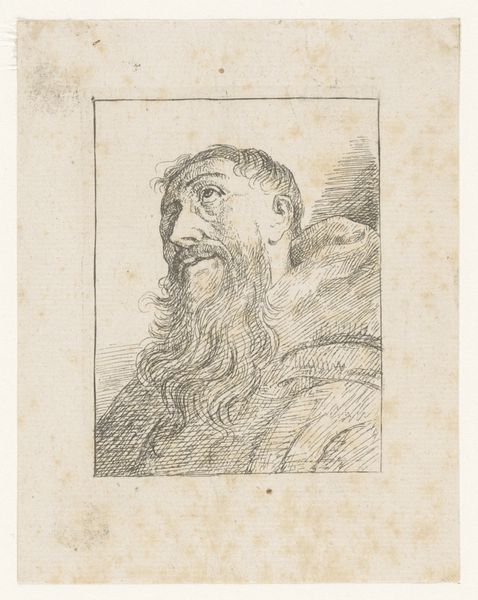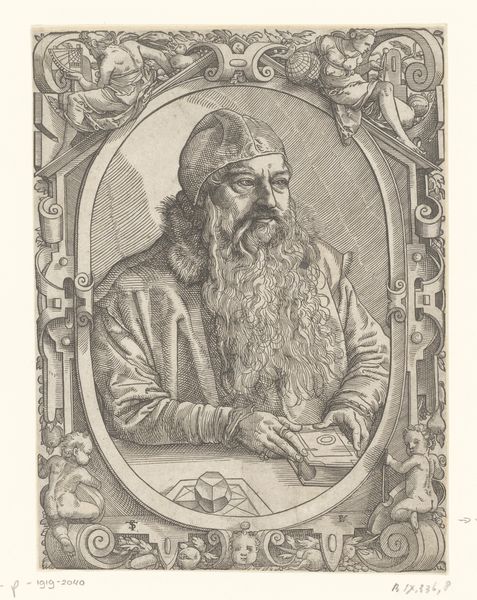
print, engraving
#
portrait
#
baroque
# print
#
figuration
#
engraving
Dimensions: height 413 mm, width 292 mm
Copyright: Rijks Museum: Open Domain
Curator: Here we have Theodor Matham's engraving, "H. Bartolomeus," likely created sometime between 1621 and 1676, judging from the artist's lifespan. The print currently resides in the Rijksmuseum's collection. Editor: The gaze immediately catches you, doesn't it? He's looking upwards with a profound, almost pained expression. There's an intense spirituality here, though tinged with sorrow. The textures achieved through the engraving are fantastic, giving life to the flowing beard and rendering the wrinkles in ways that show his life. Curator: Indeed. This print embodies the Baroque style in its dramatic use of light and shadow to depict emotion and a sense of movement. Consider, too, the socio-political landscape during Matham's active years. Religious imagery like this was significant, especially in a time of religious conflict and reformation. Editor: Exactly. The very depiction of Saint Bartholomew, known for his martyrdom of being skinned alive, positions this artwork within a narrative of persecution and faith. That knife he holds… it isn’t just a tool. It’s a symbol of trauma, of forced assimilation, and ultimately, resistance to oppression. We see echoes of that even now. Curator: Contextually, prints like this circulated widely, democratizing access to religious imagery beyond the confines of the church or wealthy patrons. They functioned almost as propaganda, solidifying beliefs and reinforcing social structures. Editor: Propaganda isn't necessarily a dirty word when we are talking about movements for collective liberation, but the way religion is used, and the types of violence religious zealotry has engendered across history, must be taken into account in unpacking this artwork today. We see similar exploitations of religious faith across all sorts of cultures to establish moral justification for what would otherwise be considered injustice. Curator: Perhaps a somber reflection is fitting, given the history of religious conflict. It brings up important questions about faith, power, and the visual representation of those themes throughout history. Editor: It's artworks like this that help us understand how such issues evolve and how those tensions are continuously being represented in new forms even now, especially as identity and violence are taken up on contemporary canvases. Curator: A powerful point. Editor: I’ll take that.
Comments
No comments
Be the first to comment and join the conversation on the ultimate creative platform.


